#unlike other types of rhino the indian rhino only has one horn
Text
you know how marco polo saw an indian rhino in sumatra and, instead of thinking, "perhaps this is completely different creature than the one I am thinking of," he just went "oh man, we really got our depictions of unicorns wrong" ? monsignor pruitt and the horrifying murderous blood drinking "angel" in the cave.
#midnight mass#also that passage about him seeing a 'unicorn' and going#my god they're ugly as shit#is like. my favorite thing.#marco polo was like well it's got one horn sooooo#pruitt was like well it does weird shit and it's got wings soooooo#also before anyone points it out#unlike other types of rhino the indian rhino only has one horn
872 notes
·
View notes
Photo
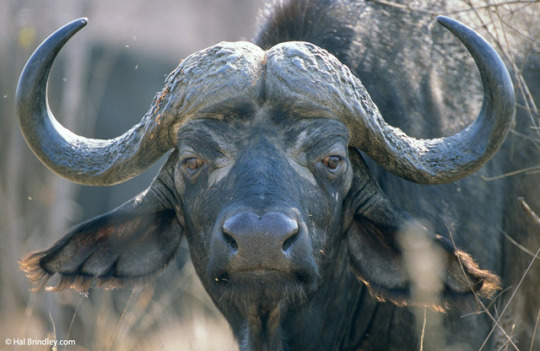

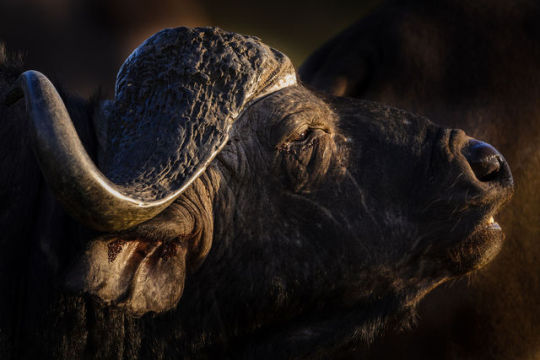
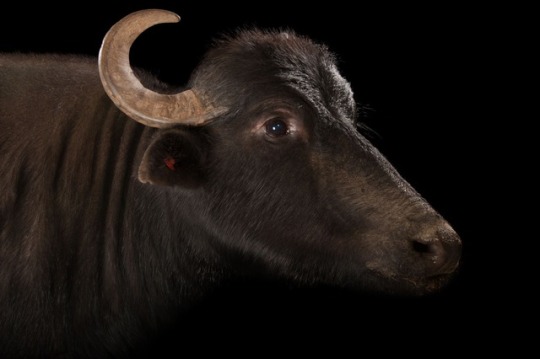


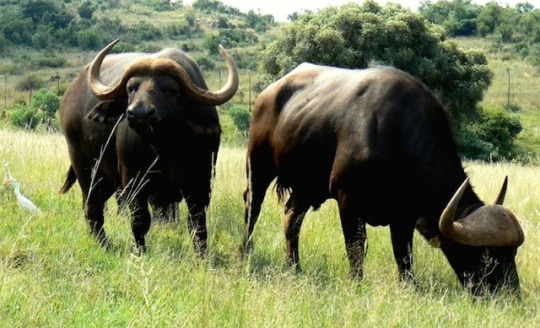
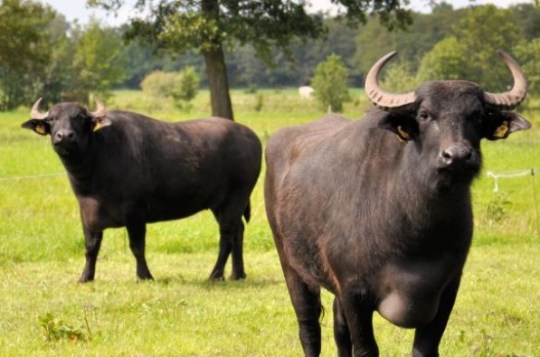
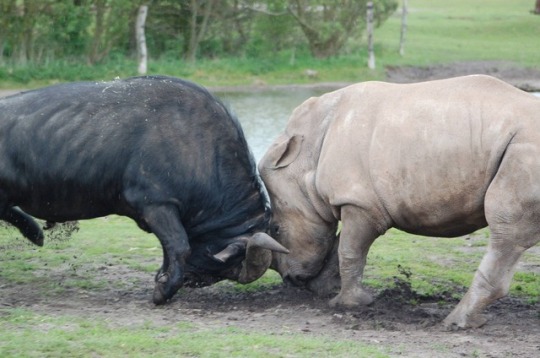
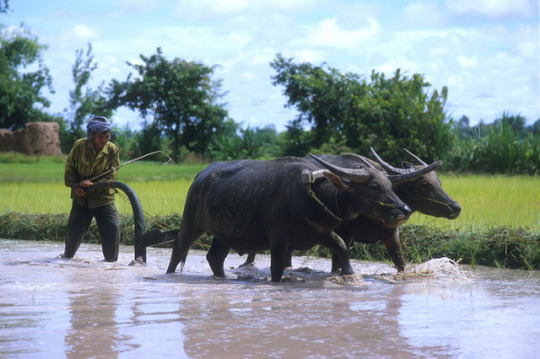
Not a water buffalo
Please, from me to the world, learn the difference.
The two animals have nothing in common but their black color and the name "buffalo". As does the American bison, and they too have nothing to do with the other two animals.
Time and time again I see on the internet, "water buffalo", with the picture being an African buffalo. I see someone saying they're planning to farm or train water buffalo, and some well-meaning but ignorant person says "But those are VICIOUS! They can gore a lion!" I've even seen an article on "alternative bovines" for farming (an excellent article otherwise), talking about yak and water buffalo, and the photo is of... an African buffalo.
Now then.
African buffalo
Also known as the Cape buffalo or Caffer buffalo (in my native Swedish tongue, I've always known them as "Kafferbuffel", but even my mom was horrified when I said we are going to keep "vattenbuffel" - sigh).
Scientifically known as Syncerus caffer, they are not closely related to any other bovines. They live exclusively in Africa (mostly the eastern south and central Africa. There are two additional subspecies with a different range, but they are so different from the main animal they are probably actually different species, and I will not talk about them here), are known as one of the "Big Five" of wild game in Africa (the others being elephant, lion, leopard and rhino), and are extremely aggressive and dangerous.
They are said to kill over 200 people every year in Africa, and the species has even earned itself nicknames like "the Black Death" and "Widowmaker".
They are large and bulky, 100-170 cm in height, and weigh 500 to 1000 kg.
They have never been domesticated, and I imagine it might be impossible (see zebra vs. horse, or why zebras can’t be domesticated).
They are never, and have never been called water buffalo, so I don't know where this confusion came from.
Water buffalo
The water buffalo, or "Asian water buffalo" (though there is only one water buffalo and it's from Asia, making this name redundant), is a bit of a taxonomic confusion since it's said to be one species, the domesticated form of the wild water buffalo, Bubalus arnee, while the domestic animal is called Bubalus bubalis.
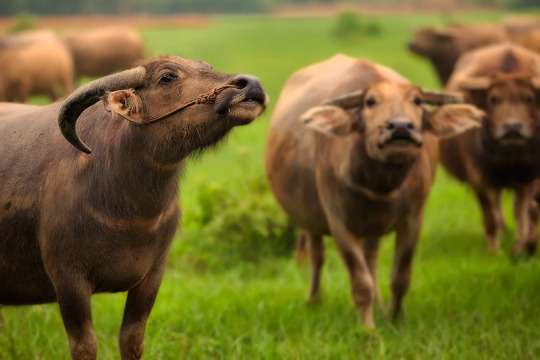
There are however two distinct types of water buffalo, called marsh buffalo and river buffalo. The marsh variety was domesticated in China and Southeast Asia, where it's used as a draft animal, and for meat. They are chunky, short-legged, with huge, backwards curving horns, and are never used for dairy.
The third image above in the right row is either a wild or marsh form, the fifth are marsh, and the rest are river.
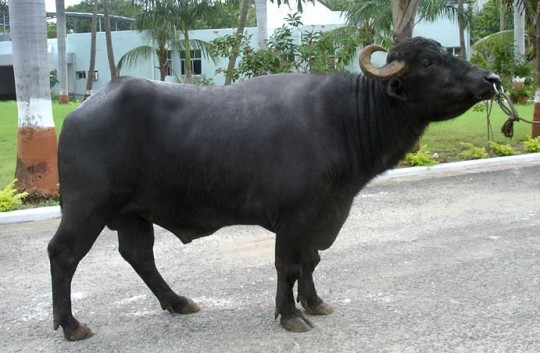
The river buffalo was domesticated in India, from a different subspecies of wild water buffalo. They are much more cow-like in appearance, are used for dairy as well as meat and leather (their skin is twice as thick as on a normal cow, and is often used to make the bottoms of shoes), and have much smaller, curved horns (many different breeds exist, with different horns, but their horns never get as big as on the marsh buffalo).
Funny thing is, many Indians get away with the ban on eating beef, by simply eating buffalo instead.
These two varieties should probably be recognized as different species, as they have different numbers of chromosomes. The swamp buffalo has 48, while the river buffalo has 50. African buffalo by the way have 52, and cattle and bison have 60.
Both varieties have been domesticated for thousands of years, as long as horses and camels (~5000 years).
As you can see especially in the fifth image of the two buffalo in the field, the water buffalo are related to the Anoa and Tamaraw, and not to domestic cattle or bison. Domestic cattle can hybridize with bison, yak and more, but not with water buffalo. Neither animal is close to, or can hybridize with (it is thought) the African buffalo.
There are about 170 million of them in the world, and despite the world's 1.4 billion domestic cattle (almost ten times as many), more people depend on water buffalo than on any other livestock animal in the world.
We consider them “exotic” in the west, but they are no more exotic than our domestic red jungle fowl from east Asia (chicken), horses from central Asia, or cats from Egypt.
Unlike the African animal they are constantly compared to, they are very mild-mannered and considered gentle even when compared to domestic cattle. They are frequently ridden and trained for draft work.
The wild buffalo is larger even than the African buffalo, at 1.6-1.9 meters at the shoulder, and 800-1200 kg in weight, they are absolutely massive. The domestic water buffalo is much more modest in size.
They get their name, obviously, from their love of water. They frequently wallow, lay down in, even swim and dive underwater. Their skin needs it, so if you have domestic water buffalo at home, they need a water hole to wallow in.
Now I hope that anyone who read it, or even just looked at the pictures, will never confuse the two again!
They have as much in common as camels and alpacas, or leopards and domestic cats.
20 notes
·
View notes